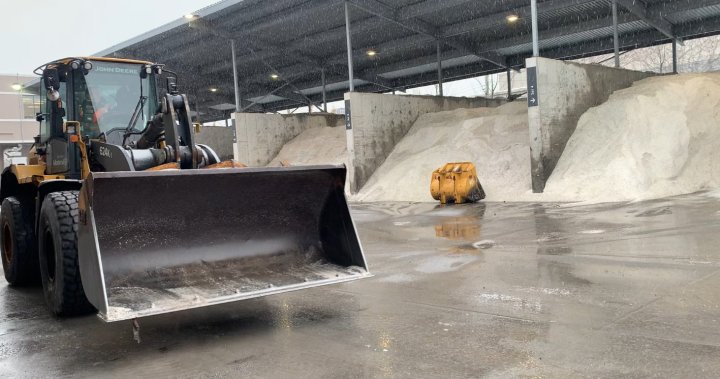Severe weather researchers are investigating after they say a tornado and potentially two others touched down in the Niagara region on Monday.
Researcher Connell Miller with the Northern Tornadoes Project at Western University says his team was monitoring storms in southwestern Ontario on Monday when they saw multiple reports on social media of what appeared to be a tornado in Fort Erie, Ont.
He says researchers used online videos and images to confirm it was a tornado and are in Fort Erie to assess the damage.
Miller says assessing the tornado’s destruction, such as any debris and possible damage to buildings in the area, can help researchers determine the intensity and size of the tornado.
The email you need for the day’s
top news stories from Canada and around the world.

Get daily National news
Get the day’s top news, political, economic, and current affairs headlines, delivered to your inbox once a day.
He says researchers are also investigating two additional suspected tornadoes, including one in the community of Stevensville in Fort Erie after there were reports of funnel clouds in the area.
Miller says while southwestern Ontario is a hot spot for tornadoes, the Niagara region generally sees less tornadoes than areas such as Barrie, Ont., or Ottawa.
“We have our engineering team out there that will take a look at the damage and take a look not only at what’s been damaged, but things like the construction quality, the age of the building, what’s surrounding in the area,” Miller said.
The Northern Tornadoes Project was founded at Western University in 2017 to share open data on tornadoes in Canada. Miller says the project aims to contribute to the country’s tornado climatology research and create new tools to assess severe weather events.
“What we can do with all of this data we’re gathering is trying to come up with alternative methods that allow us to get a sense of how strong the tornado is by using unconventional things being damaged,” Miller says. “Things like cars being thrown, crop damage, or even tree fall.”
Miller says he hopes their tornado investigations can help provide a better understanding of how climate change impacts severe weather events in Canada.
Environment Canada says Canada has the second highest tornado occurrence rate in the world behind the United States, most often happening in the Prairies and southern Ontario and peaking in late June and July.
© 2024 The Canadian Press




